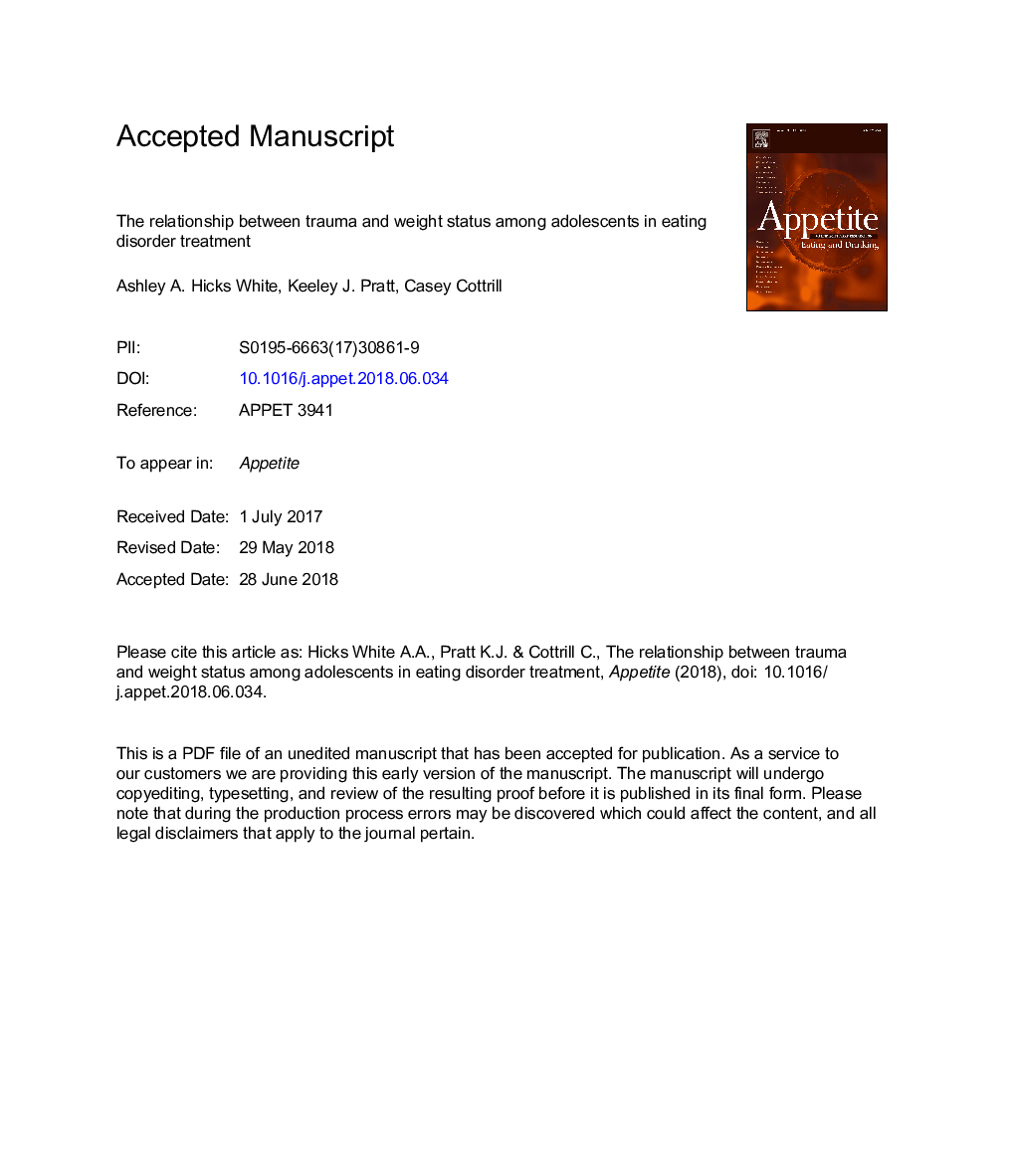| Article ID | Journal | Published Year | Pages | File Type |
|---|---|---|---|---|
| 7305126 | Appetite | 2018 | 18 Pages |
Abstract
A relationship between trauma and eating disorders in adolescence is well established, though less is known about how different types of trauma, apart from childhood sexual abuse, associate with eating disorders. The purpose of this study is to describe the prevalence of various trauma types in a clinical sample of adolescents presenting at an outpatient eating disorder treatment facility (Nâ¯=â¯182). Thirty-five percent of the sample reported experiencing one or more traumatic events during their lifetime. Bullying was the most prevalent type of trauma (10%), followed by significant death/loss (9%), and sexual abuse (8%). Adolescents with any trauma exposure had higher body mass index (BMI), BMI percentile, and percent expected body weight (%EBW) compared to those without any trauma exposure. Specifically, patients who were exposed to bullying and domestic violence reported a significantly higher %EBW than those who were not exposed. On average, adolescents exposed to bullying had a %EBW that was 7 percentage points higher than their non-exposed peers. Patients with bulimia nervosa were more likely to report trauma exposure than those with other eating disorder diagnosis. Providers working with adolescents diagnosed with eating disorders of all weight statuses should consider assessing for past and current trauma, including bullying and exposure to domestic violence. Trauma informed approaches to eating disorder treatment are needed to avoid potentially activating or exacerbating trauma related distress for adolescents in eating disorder treatment.
Related Topics
Life Sciences
Agricultural and Biological Sciences
Food Science
Authors
Ashley A. Hicks White, Keeley J. Pratt, Casey Cottrill,
